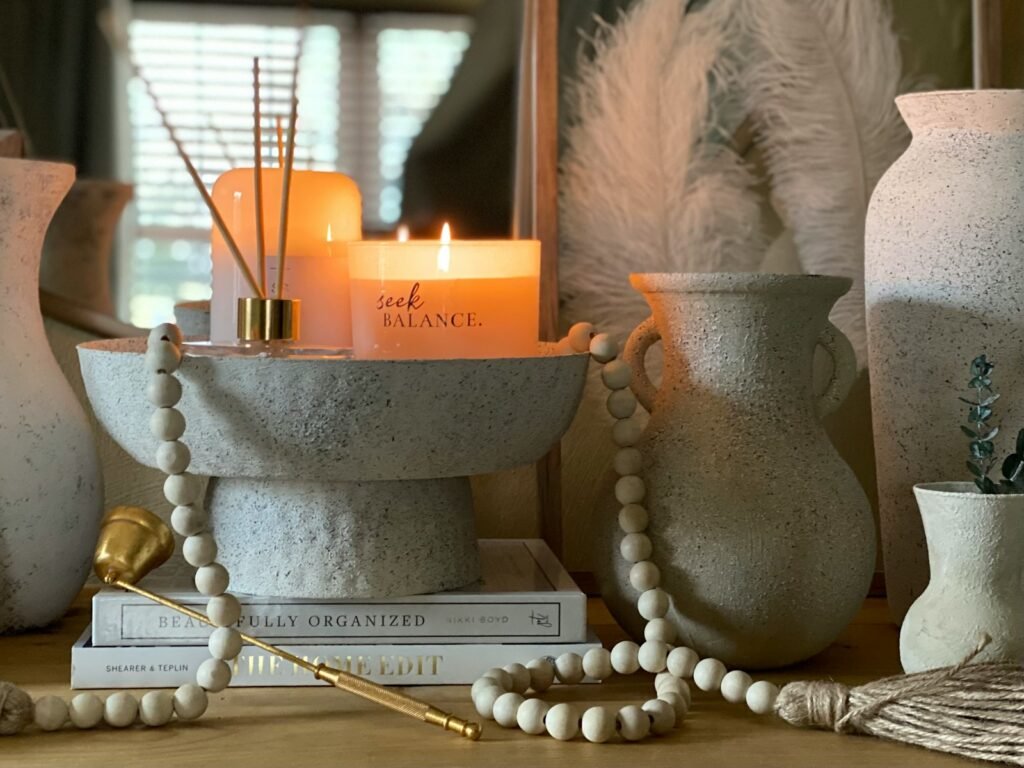- Home
- Meditation
- Five Uplifting Steps To Supercharge Inner Peace

Five Uplifting Steps To Supercharge Inner Peace
Introduction
Many seek inner peace in a chaotic world. It’s about achieving a state of mental and emotional calmness despite external noise and pressures. This article explores five crucial steps to unlock the path to personal serenity. Welcome to self-discovery of inner peace and serenity. Where we provide you with the tools and techniques necessary to achieve mindfulness and inner peace.
What is Inner Peace?
Inner peace refers to a state of mental and emotional calmness where one feels content, balanced, and free from stress. It involves a deep sense of stability and tranquility that persists even in challenging situations. This allows individuals to maintain clarity, focus, and a positive outlook.
Achieving inner peace takes practice to develop mindfulness, emotional resilience, and self-awareness. This can include meditation, yoga, deep breathing exercises, and other techniques that help manage stress and emotions. Inner peace also often involves a philosophical or spiritual element, such as accepting things as they are and letting go of control over uncontrollable aspects of life.
People who experience inner peace often report feeling less affected by criticism and adversity, having more compatible relationships, and possessing greater purpose and satisfaction in life. This peaceful state supports feel-good feelings and contributes to healthier interactions and a balanced approach to life’s challenges.
The Importance of Inner Peace
Inner peace goes beyond the simple concept of tranquility. It is a basic component of good health that influences every aspect of our lives. When we have inner peace, we have a powerful tool that increases our resilience against stress. This not only helps us manage day-to-day pressures but also shields us from the long-term effects of stress, including everything from depression to heart disease.
Crucial Role in Relationships
Moreover, inner peace plays a crucial role in our relationships. It allows us to handle interactions calmly and clearly, reducing conflicts and deepening connections with others. When we are at peace, we are more present, which makes us better listeners and more understanding. These qualities are invaluable when building solid and supportive relationships that enrich our lives.
Contributes to a Positive and Healthy Outlook
Additionally, inner peace contributes to a positive and healthy outlook on life. It helps us see the opportunities in challenges and the lessons in failures, encouraging a more optimistic and proactive approach to life’s hurdles. This mindset enhances our personal and professional growth and contributes to a happier, more fulfilling life.
Thus, cultivating inner peace is not merely about achieving moments of calm but about building a foundation for a healthier, more resilient, and joyous existence. By prioritizing inner peace, we invest in our mental, emotional, and physical health, paving the way for a more balanced and satisfying life.

The Five Crucial Steps To Unlocking Inner Peace
Unlocking inner peace requires dedication and practice. By following these five steps, you can foster a more peaceful and fulfilling life.
Step 1: Cultivating Mindfulness
What is Mindfulness?
Mindfulness is fully present and engaged at the moment without distraction or judgment. It involves a heightened awareness of our thoughts, emotions, and surroundings.
Techniques for Practicing Mindfulness
To understand mindfulness, start with meditation, deep breathing exercises, and being attentive to the details of everyday activities.
Step 2: Embracing Acceptance
The Power of Acceptance
Acceptance is about acknowledging reality as it is rather than how we wish it were. It’s a key component in reducing frustrations and disappointments.
Practical Tips for Cultivating Acceptance
Practices such as reflective journaling and cognitive reframing can help develop acceptance and letting go of the need for control.
Step 3: Reducing Stress and Anxiety
Identifying Sources of Stress
Understanding what triggers stress is the first step in managing it effectively. This might include workload, relationships, or health concerns.
Techniques to Manage Stress
Stress can be managed through time management, relaxation techniques, and seeking professional help when necessary.
Step 4: Nurturing Positive Relationships
The Role of Relationships in Inner Peace
Positive relationships are the foundation for emotional support and stress alleviation. They provide a sense of belonging and help cultivate happiness.
How to Foster Positive Interactions
Effective communication, empathy, and boundary-setting are crucial for healthy relationships.
Step 5: Regular Physical Activity
Benefits of Physical Activity for Mental Health
Regular physical activity profoundly benefits mental health. It releases endorphins, which are natural mood lifters and help in reducing anxiety and depression.
Recommended Activities for Inner Peace
Activities like yoga, walking, and swimming are especially effective in promoting relaxation and mental clarity.
These five steps can be challenging but offer many benefits that extend beyond personal tranquility to influence every aspect of one’s life.

How to Use The Five Steps To Unlock Inner Peace
Unlocking inner peace involves a combination of practices, mindset shifts, and lifestyle changes that can help you achieve a state of mental and emotional tranquility.
Here are some key strategies to unlock inner peace:
-
Practice Mindfulness and Meditation: Begin by incorporating mindfulness into your daily routine. Meditation can significantly help calm the mind and reduce Stress. Start by spending a few minutes each day focusing on your breath or engaging in guided meditations.
-
Cultivate Acceptance: Learn to accept things as they are, not as you wish. Cultivating acceptance involves understanding and coming to terms with your reality, which can dramatically reduce feelings of frustration and helplessness.
-
Manage Stress Effectively: Identify your stress triggers and implement strategies. Stress management could involve setting healthier boundaries, practicing relaxation techniques such as deep breathing, and prioritizing tasks and responsibilities.
-
Foster Healthy Relationships: Surround yourself with supportive and positive people. Healthy relationships contribute to community and belonging, reducing loneliness and Stress.
-
Engage in Physical Activity: Regular exercise is a powerful stress reliever. Whether it’s yoga, walking, or sports, find an activity you enjoy and make it a part of your routine.
-
Nurture Compassion: Being kind to others and yourself can foster feelings of joy and contentment. Practice self-compassion, forgive yourself and others, and engage in acts of kindness.
-
Disconnect to Reconnect: Take breaks from digital devices and social media to reconnect with yourself. Spend time in nature or engage in activities that make you feel alive and connected to your surroundings.
-
Seek Professional Guidance: Professional help, such as therapy or counseling, is sometimes necessary to address deeper issues that are blocking one’s path to inner peace.
-
Establish a Routine: Routines can provide a sense of structure and security, which may help reduce anxiety. Create a daily schedule that includes time for work and relaxation.
-
Reflect and Reassess: Regularly reflect on your life, assessing what brings you peace and causes turmoil. Make adjustments as needed to enhance your sense of inner peace.
Adopting these practices can unlock a path to inner peace, enhancing your well-being and quality of life. Remember, the journey to inner peace is ongoing and evolves with you.
Meditation Techniques for Unlocking Inner Peace
When it comes to meditation, there are a variety of techniques to choose from. Each method offers unique benefits and qualities, allowing you to explore and deepen your practice differently. Whether you’re a beginner or an experienced meditator, understanding different meditation techniques can help you find the one that resonates best with your essence.
Meditation is a powerful tool for achieving inner peace. It helps to calm the mind, reduce stress, and enhance overall emotional well-being.
Here are several meditation techniques that can assist in unlocking inner peace:
-
Mindfulness Meditation: This form of meditation involves focusing on the present moment without judgment. You simply observe your thoughts, feelings, and sensations as they arise. To practice mindfulness meditation, find a quiet place, sit in a comfortable position, and focus on your breath. When your mind wanders, gently bring your attention back to your breath.
-
Guided Meditation: This involves meditating with the help of a guide, either in person or through a recording. The guide will lead you through a series of relaxing visuals or thoughts, helping your mind focus on positive images and sensations. Guided meditations are particularly useful for beginners or those who find it difficult to concentrate during meditation.
-
Transcendental Meditation: In transcendental meditation, you silently repeat a personal mantra, such as a word, sound, or phrase, in a specific way. This technique allows your mind to settle inward beyond thought to experience a state of pure consciousness or restful alertness. It’s simple to learn and provides a deep state of relaxation.
-
Body Scan Meditation: This involves mentally scanning your body for areas of tension and consciously relaxing these areas. It’s practiced by lying on your back and slowly focusing on each part of the body, from your feet to the top of your head. This technique not only promotes relaxation but also increases bodily awareness.
-
Loving-kindness Meditation (Metta): Metta meditation is the practice of directing well-wishes towards others and oneself. It typically involves silently repeating phrases that express goodwill and kindness towards oneself and others. This can foster a sense of inner peace by reducing feelings of anger and increasing empathy and compassion.
-
Breath Awareness Meditation: This simple technique focuses solely on the act of breathing. Pay attention to the inhalation and exhalation, noting the rhythm and any sensations in the body. Breath awareness helps calm the mind and reduces stress.
-
Zen Meditation (Zazen): Zazen is a type of meditation that can be part of a formal Zen practice. The method involves observing the thoughts passing through the mind without getting involved or reacting to them. This usually requires sitting in a specific posture and focusing on the breath while observing the thoughts and sensations that arise.
-
Walking Meditation: Unlike other forms, walking meditation involves movement. This can be especially beneficial for those who find it difficult to sit still. It involves walking at a relaxed, slow pace in a quiet space, focusing on the experience of walking, noticing the sensations of standing, and the subtle movements that help maintain balance.
-
Chakra Meditation: This involves focusing on different energy centers in the body called chakras. The meditation can include visualization techniques, such as imagining a lotus opening or the flow of energy through your body.
-
Visualization Meditation: This technique involves imagining a peaceful scene, place, or experience in order to relax the mind. Visualization can help you switch your focus from worries and stress to calming and uplifting images, thus fostering inner peace.
Incorporating these meditation techniques into your daily routine can help you unlock inner peace, reduce stress, and enhance your emotional well-being. It’s beneficial to experiment with different types of meditation to find the one that works best for you.
Each meditation technique offers its own set of benefits and qualities, providing a unique path to self-discovery and inner peace. Experimenting with different techniques can help you find the one that resonates best with your own practice.
Five Shocking Benefits Of Meditation
Unlocking Inner Peace Benefits
Unlocking inner peace offers numerous benefits that can enhance both your mental and physical health, and overall quality of life. Here are some of the key advantages:
-
Reduced Stress and Anxiety: One of the most immediate benefits of achieving inner peace is significantly reducing stress and anxiety. When you feel at peace, your body’s stress response is less likely to be triggered, leading to lower cortisol levels and a calmer state of mind.
-
Enhanced Emotional Resilience: Inner peace strengthens your emotional resilience, helping you to handle life’s ups and downs more effectively. With a solid foundation of tranquility, you’re better equipped to navigate challenges without becoming overwhelmed.
-
Improved Physical Health: There’s a strong link between the mind and the body. By maintaining a peaceful and stress-free mind, you can help prevent stress-related ailments like hypertension, heart disease, and digestive issues. Moreover, inner peace can improve sleep quality and boost immune function.
-
Better Concentration and Productivity: A peaceful mind allows for clearer thinking and better concentration. This improves your ability to work efficiently and enhances creativity and decision-making skills.
-
Deeper Relationships: Inner peace can lead to more harmonious relationships. When calm and centered, you are more patient and understanding and less likely to react negatively. This makes for deeper, more meaningful connections with others.
-
Increased Self-Awareness and Personal Growth: The journey to inner peace often involves deep self-reflection, which can increase self-awareness and lead to personal growth. Understanding your thoughts, emotions, and behaviors allows you to develop a more profound sense of self and your purpose in life.
-
Greater Happiness and Satisfaction: Inner peace is a vital part of happiness. When negative emotions do not stress you, you can find joy and satisfaction in everyday experiences.
-
Spiritual Development: For many, achieving inner peace is part of their spiritual journey. It can lead to a greater sense of connectedness with the universe, a deeper understanding of one’s spiritual beliefs, and a heightened sense of being.
-
Positive Outlook on Life: Inner peace shifts your perspective towards a more positive outlook. Challenges become growth opportunities, and adversities are met with a calm and thoughtful approach.
-
Longevity: Studies suggest that maintaining a state of calm and managing stress effectively can lead to longer life expectancy. People who live in a state of peace often enjoy a higher quality of life as they age.
Unlocking inner peace is a worthwhile pursuit that can dramatically improve your mental, physical, and emotional health, leading to a more fulfilling and balanced life.
Key Takeaways
- Unlock inner peace and achieve mindfulness through meditation
- Discover various meditation techniques such as mindfulness, transcendental, and breath-centered meditation
- Embrace the power of meditation for stress relief, good health, and spiritual growth
- Adopt a structured approach to meditation to maximize its benefits
Conclusion
As you reach the end of this guide, you have gained valuable insights into the essence of meditation and its transformative power. Learning how to meditate opens the door to a multitude of possibilities for achieving inner peace and spiritual enlightenment.
It is essential to overcome skepticism and embrace the practice of meditation, even when faced with challenges. Consistent dedication to meditation exercises will allow you to embark on your own unique meditation journey.
Remember, meditation is a lifelong practice, and each session brings you closer to a state of deep relaxation and heightened awareness. With time and patience, you will learn to meditate, connecting with your inner self and experiencing the profound benefits it brings to your mental and emotional well-being.
So, take a deep breath, find a quiet space, and begin your meditation journey today. The path to inner peace awaits, and the potential for transformation is vast. As you dedicate yourself to learning how to meditate, you open yourself up to a world of tranquility and self-discovery.
Frequently Asked Question
1. How do I start meditating?
To start meditating, find a quiet and comfortable space where you won’t be disturbed. Sit in a relaxed position, close your eyes, and focus on your breath. Allow your thoughts to come and go without judgment, and gently bring your focus back to your breath whenever your mind wanders.
2. What are the benefits of meditation?
Meditation offers a wide range of benefits, including reduced stress and anxiety, improved focus and concentration, increased self-awareness, enhanced emotional well-being, and a greater sense of inner peace and calm.
3. How often should I meditate?
The frequency of your meditation practice depends on your personal preferences and schedule. Start with just a few minutes per day and gradually increase the duration as you become more comfortable. Aim to meditate at least once a day to experience the full benefits.
4. How do I start meditating?
To start meditating, find a quiet and comfortable space where you won’t be disturbed. Sit in a relaxed position, close your eyes, and focus on your breath. Allow your thoughts to come and go without judgment, and gently bring your focus back to your breath whenever your mind wanders.
5. What are the benefits of meditation?
Meditation offers a wide range of benefits, including reduced stress and anxiety, improved focus and concentration, increased self-awareness, enhanced emotional well-being, and a greater sense of inner peace and calm.
6. What is mindfulness meditation?
Mindfulness meditation involves bringing your attention to the present moment and becoming fully aware of your thoughts, feelings, and sensations. It encourages non-judgmental observation and acceptance of your experiences, promoting a sense of clarity and presence.
7. What is transcendental meditation?
Transcendental meditation is a technique where you repeat a mantra silently to yourself in order to transcend to a state of deep relaxation and inner stillness. It is practiced for 20 minutes, twice a day, and is known for its ability to reduce stress and promote overall well-being.
About The Author
Zackery Dixon
administrator
Zackery N. Dixon, a seasoned web designer, entrepreneur, blogger, and proud U.S. Marine, has carved a remarkable path in the digital landscape. At 69, Zackery’s extensive experience and dedication have culminated in a fulfilling retirement, underscoring his notable achievements in the industry.
With a career spanning several decades, Zackery’s expertise in web design is reflected in the successful management of four diverse and dynamic websites. Each platform—First Digital Electronics, Law of Attraction Lab, Diet Exercise Pros, and Yoga Meditation Hub—demonstrates his commitment to delivering valuable content and innovative design.
